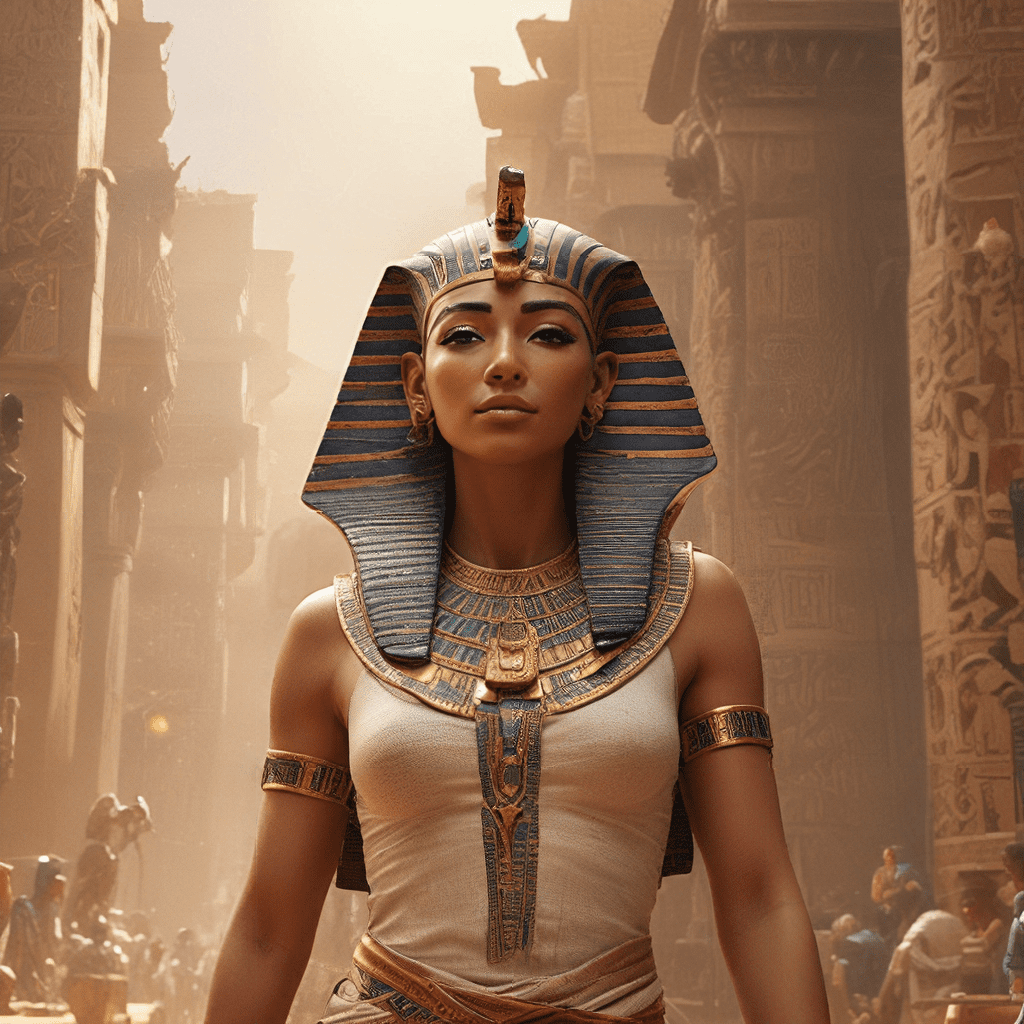1. Introduction: The Power of Symbols
Ancient Egypt, a civilization that stretched across millennia, left behind a legacy of breathtaking monuments, intricate hieroglyphs, and awe-inspiring stories. At the heart of this ancient culture lies a profound understanding of symbols, a language that speaks to the divine. The Egyptians believed that symbols held immense power, capable of connecting the physical world with the spiritual realm. They used these symbols to express profound ideas about life, death, creation, and the nature of the universe. Understanding Egyptian symbolism is like unlocking a door to a world of forgotten mysteries, a world where the gods walked among humans and the fabric of reality was woven with meaning.
2. The Divine Realm: A Tapestry of Symbols
The ancient Egyptians believed that the world was ruled by a pantheon of gods and goddesses, each with their own unique attributes and roles. These divine beings were represented through intricate symbols, creating a tapestry of meaning woven into the very fabric of their lives. The Ennead, a group of nine primary deities, formed the core of their belief system. At the head stood Ra, the sun god, whose journey across the sky symbolized the cycle of life, death, and rebirth. Osiris, the god of the underworld, and his wife Isis, goddess of magic and healing, represented the mysteries of life and death, while their son Horus, the falcon-headed god, embodied royal power and protection.
3. The Sacred Animals: Embodied Divine Power
Animals played a significant role in Egyptian mythology, often representing specific divine attributes. The lion, with its strength and courage, was associated with the powerful goddess Sekhmet, embodying the fierce side of the divine. The cat, known for its grace and agility, was sacred to the goddess Bastet, representing protection and the mystical world. The scarab beetle, a symbol of rebirth and creation, was deeply connected to the sun god Ra, reflecting the idea that life emerges from darkness. These animal representations linked the natural world with the divine, highlighting the interconnectedness of all things.
4. The Importance of Hieroglyphs
Hieroglyphs, the ancient Egyptian writing system, were more than just words. They served as visual representations of ideas and concepts, a language of symbols that bridged the physical and the spiritual. Each hieroglyph was a picture, representing a sound, an object, or an abstract concept, creating a system of communication that was both beautiful and complex. Understanding the meaning behind these hieroglyphs offers a glimpse into the minds of the ancient Egyptians, revealing their beliefs, rituals, and worldview.
5. The World of the Dead: Symbolic Journey
The ancient Egyptians were fascinated by the concept of the afterlife, believing that death was a passage to a spiritual realm. This journey, fraught with challenges and trials, was guided by symbolic rituals and practices. The Book of the Dead, a collection of spells and incantations, served as a guide for the deceased through the underworld, where they faced judgment and the weighing of their hearts against the feather of Ma’at, goddess of truth and justice. The intricate imagery of the Book of the Dead reflects the Egyptians’ profound understanding of the human soul and its eternal journey.
6. The Power of Colors: A Visual Language
Color played a significant role in Egyptian art and symbolism, conveying meaning beyond the visual. Gold, the color of the sun and the pharaoh’s wealth, represented illumination, divine power, and immortality. Blue, the color of the sky and the Nile River, symbolized the heavens, water, and the eternal cycle of life. Red, the color of blood and life, represented strength, power, and the vital force. The Egyptians used color to imbue their art with layers of meaning, reflecting their worldview and beliefs.
7. The Sacred Geometry of Pyramids and Temples
The architecture of ancient Egypt is a testament to the Egyptians’ profound understanding of geometry and its symbolic significance. The pyramids, aligned with the stars, served as mausoleums for pharaohs, reflecting their connection to the divine realm. The temples, intricately designed and decorated with symbolic imagery, served as places of worship and connection with the gods. The geometric forms of these structures, including the pyramids, the obelisk, and the Sphinx, reflected the Egyptians’ belief in a divinely ordered universe, where mathematics and geometry were interwoven with the fabric of creation.
8. Egyptian Art and Its Symbolic Language
Egyptian art was not simply decorative, but served as a powerful tool for communicating beliefs, rituals, and stories. From the intricate wall paintings in tombs to the majestic statues of gods and goddesses, every piece of art held a specific meaning. The Egyptians used their art as a visual language, telling stories about the gods, the pharaohs, and the journey to the afterlife. By deciphering the symbolism in these works, we gain a deeper understanding of their culture and beliefs, their connection to the divine, and their profound reverence for the mysteries of life and death.




